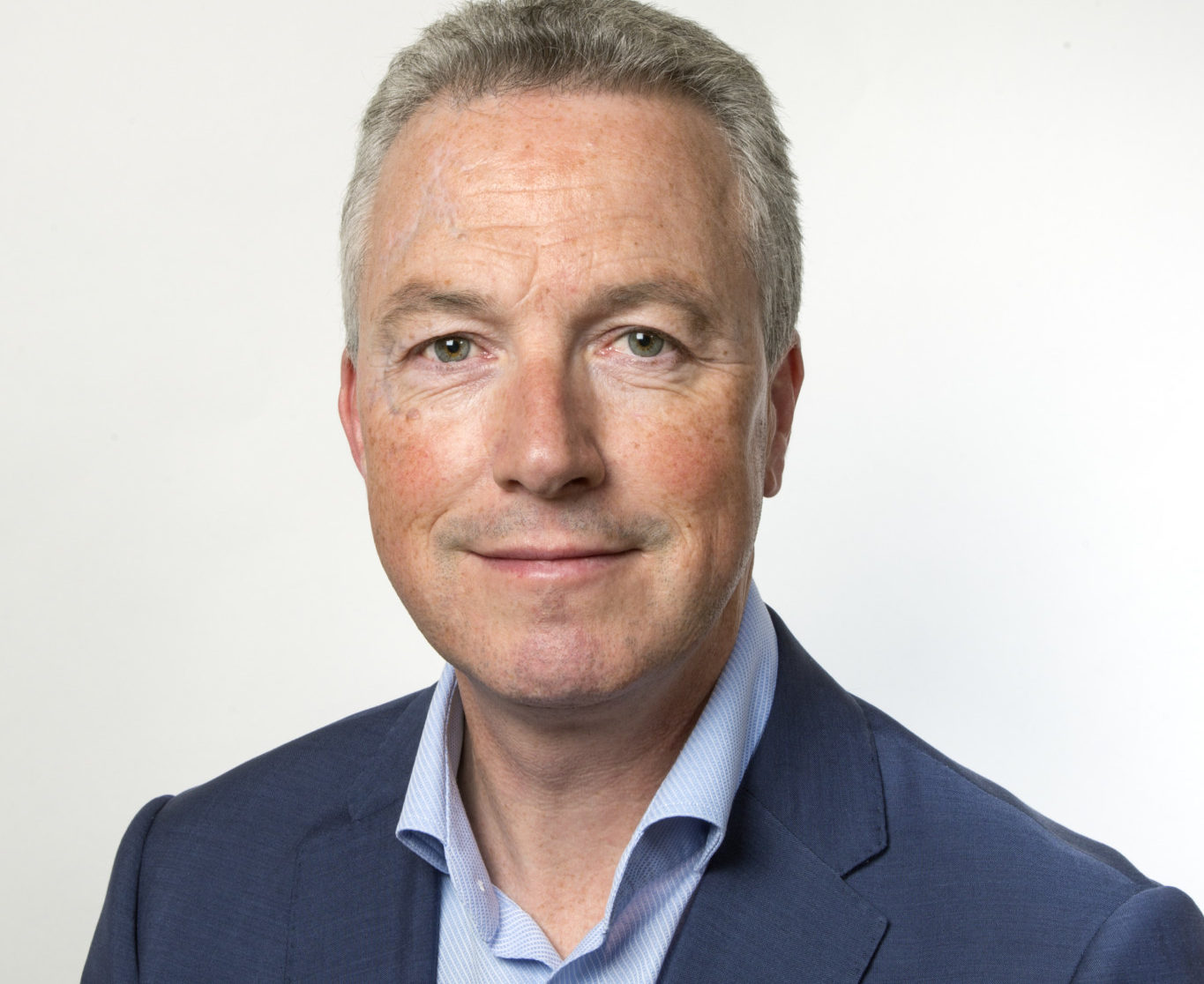It has been only 10 years since Fraser Hart was acquired by the Anthony Nicholas Group, and the group’s chief executive is firing up a major refurbishment programme — moving its stores upmarket at the same time as investing in its digital-to-physical shopping omnichannel proposition. The cost of just standing still in a rapidly changing market is escalating, but Mr Coyle is determined to outperform its competition, as he explains in this wide-ranging conversation with WatchPro’s Rob Corder.
WP: You acquired Fraser Hart 10 years ago. How does it fit into the wider Anthony Nicholas Group group?
Noel Coyle: We have two retail brands within the Anthony Nicholas Group. We have a retail brand in Ireland called Fields, and we have Fraser Hart in the UK. Fields is a chain of mid-market stores in Ireland. We operate predominately as Fraser Hart in the UK, but we also have some legacy, subsidiary, brands that came with the Fraser Hart acquisition such as three Crouch stores in Wales and Lyons in Croydon.
These are regional and tactical brands, but we have not added to those brands with new openings. Everything we have opened has been under the Fraser Hart name. Crouch and Lyons are strong independent brands that were acquired first by Fraser Hart over the years, and they kept their identities because they had strong names locally.
In an evolving omnichannel context, we have to take decisions about whether we retain those names or bring them under Fraser Hart. We are not at that stage at the moment, but we will continue to evaluate.
WP: If you include all of Fields, Fraser Hart, Crouch and Lyons, how many stores do you have in total?
NC: That makes 54 stores. We have 40 in the UK and 14 in Ireland. In Ireland 14 stores makes us a dominant multiple nationwide. Ireland is not a big market and we are looking to acquire only two or three stores to give us complete coverage. We may get to a maximum of 20 in Ireland.
The UK is different. We operate in 41 centres. They are generally speaking major scale centres. We don’t really have a tail of smaller stores. Everything we have opened in the past 10 years has been in scale centres, strong market locations or central locations. Our last opening was in Stratford Upon Avon, which is a high street store, but it is a very affluent market.
Our tactics over the past 10 years has been to build the Fraser Hart estate strategically. It hasn’t been all shopping centres or high streets. It has been the right stores in the right locations where we can put together the right product proposition; where there is an under-exposure for our retail model in that market. That is our focus.
As we go forward, from a business perspective, omnichannel is changing the context of retail, but we still see a role for stores, and we still intend to open new stores. We won’t be opening new stores just to get to a certain number. It will be about supporting our omnichannel proposition into the future. We will open in the right locations where we can get the right proposition.
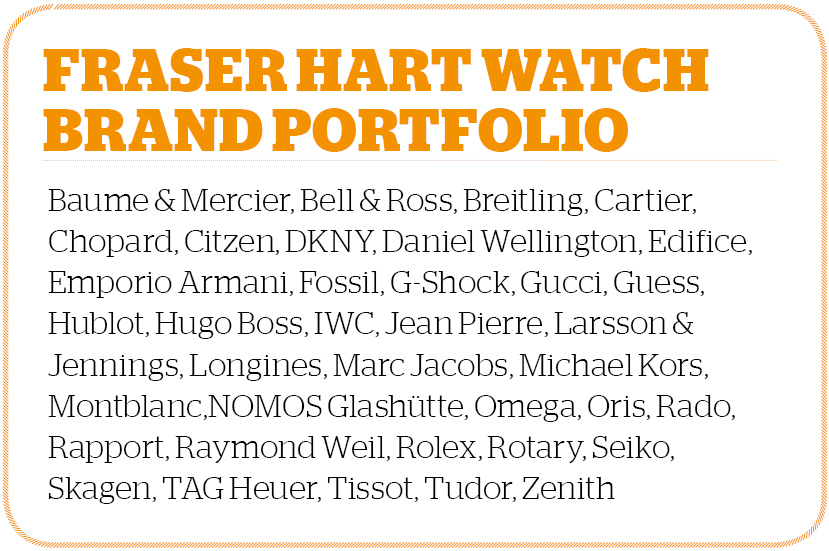
WP: Tell me more about omnichannel from your point of view.
NC: That is the direction for us. Online is going to get stronger and stronger. We are doubling online sales every year, but from a relatively low base. Online still only accounts for a single-digit percentage of our overall turnover, which means there is a big opportunity for us.
However, we do not see online as a pure volume play. A lot of the volume now is in the value, fashion, end of the market, which is not where we want to be. We want to sit in the mid- to high-end of the market. We want to focus on quality from a product point of view and a customer experience point of view and provide that across all channels.
We don’t want to talk about online and offline customers. We are talking about one customer. Internally, our focus is on one customer: where they want to shop, how they want to shop, in what environment they want. That is what we are investing in. We need to make sure that the environment in our stores and on our website is consistent.
WP: The strategy sounds simple, and unarguably correct, but the execution is mind-bogglingly complex and expensive.
NC: There is no doubt that the investment is unavoidable. We can either bury our heads in the sand and focus on bricks and mortar, or we can embrace [omnichannel]. We are certainly going to embrace it, the question is only how and when. The market is polarising; we cannot be all things to all people in our stores or omnichannel. We have all been guilty of that in the past — of chasing the next hot thing, be that fashion brands, competing on price or excessive product offer. The consumer is much more savvy now.
We are building our strategy and we are defining what the Fraser Hart brand stands for. That affects everything from the brands and product we stock, the store environment we create, the service level, our people and how we approach the overall customer experience.
We have defined our brand proposition internally so that we can then start delivering it in every channel. It is probably the biggest change we have made to our business in the past 10 years. It is driving everything we do, and is all framed by a clear vision on what our target market is. It is about a quality proposition on products and a breadth of products across luxury watches and a strong bridal and general jewellery portfolio.
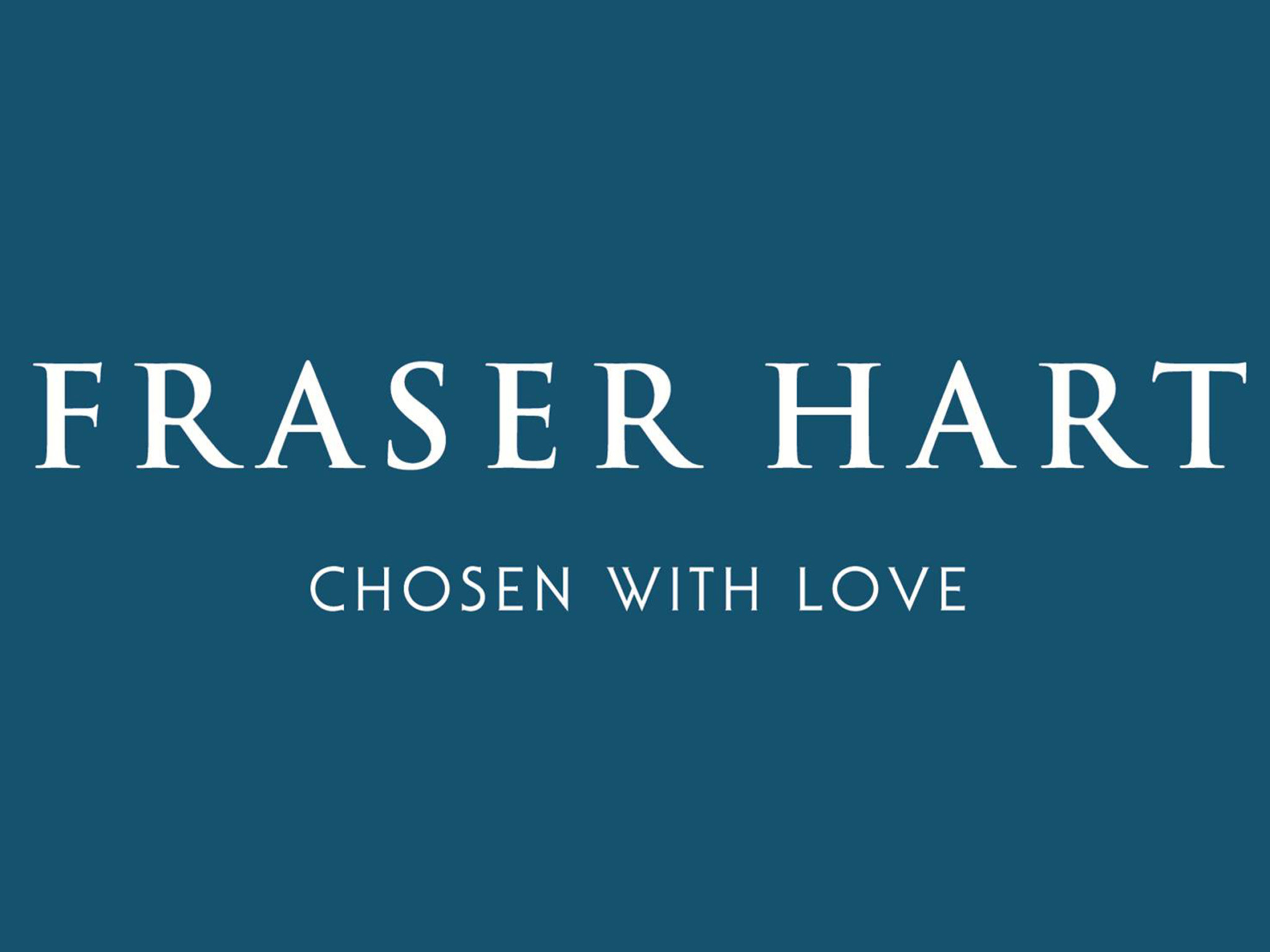
WP: You may be trying to differentiate yourself, but the space you are describing, at the mid- to high-end, is where everybody is heading; certainly those that are currently suffering from cut-throat competition at the value end of the market.
NC: Competition varies in different tiers of the market, and it is important to be clear about your positioning. We do not have the scale of an Ernest Jones, Beaverbrooks or Goldsmiths with Aurum, so we have an opportunity and need to compete in different ways.
WP: Does scale make that much difference? Fraser Hart may not have as many stores as Ernest Jones, but you are both big enough to enjoy the same economies of scale.
NC: In terms of driving a lot of promotional propositions and price propositions, we are not in that market and it is not a market we choose to play in. However, we do believe that Fraser Hart can compete very actively with our branded watch, bridal and jewellery ranges. Using our size and our flexibility, we think we can create a different customer experience level to our competitors. We will play to our strengths. We are clear about what we are aiming for with our teams, and our customers will see us deliver this consistently.
Consistency is important, particularly as we are operating across different types of physical stores and online — the whole omnichannel experience. We want to deliver the same high quality service to our customers every time, and that is a challenge and that is our competitive advantage.
WP: I suppose it is not just one battle, it is hundreds of battles up and down the country as well as online. In any major shopping centre you are trying to differentiate Fraser Hart from all similar-looking jewellers in the same place.
NC: Yes, some of that is about the store environment and the quality of what we offer in each store. It relates to how we design stores, the quality of our visual merchandising and how we tell stories. Something that we are very focused on is how our stores are perceived and what the customer sees. You are right that the same four jewellers in four corners of a shopping centre can look pretty much the same. We carry many of the same brands, and in generic jewellery we offer similar products.
Going forward, we are going to be re-positioning our product. We are going to be much clearer with our customers about what our ranges are and what differentiates them. In bridal jewellery, we are developing our own brand and developing gold and diamond collections under that.
We will be taking a less is more approach, so we will be editing all of our ranges so that we only offer what we know is right in our market. We will make that clearer to our customers, and not try to be all things to all people.
It is about segmenting our offer, adding clarity about our positioning, and making it easier for our customers to understand what they are going to experience every time they come to Fraser Hart.
Generally, jewellery store environments can be a bit challenging to customers, whether we are talking about an internal model where merchandising is primarily inside the stores, or our approach until now which has been very window-driven, with most of our product in the windows.
We are changing the way we merchandise so that more of our experience is internal. We will be creating less density in our windows, and less density generally in our stores. This will make it much clearer for our customers.
The challenge for all retailers, not just jewellers, is to be much clearer with customers in terms of what they are, who is the customer, what is the proposition. Once we understand that, we have some chance of building loyalty. That is where we have to go in the future, we have to develop long term advocates for Fraser Hart.
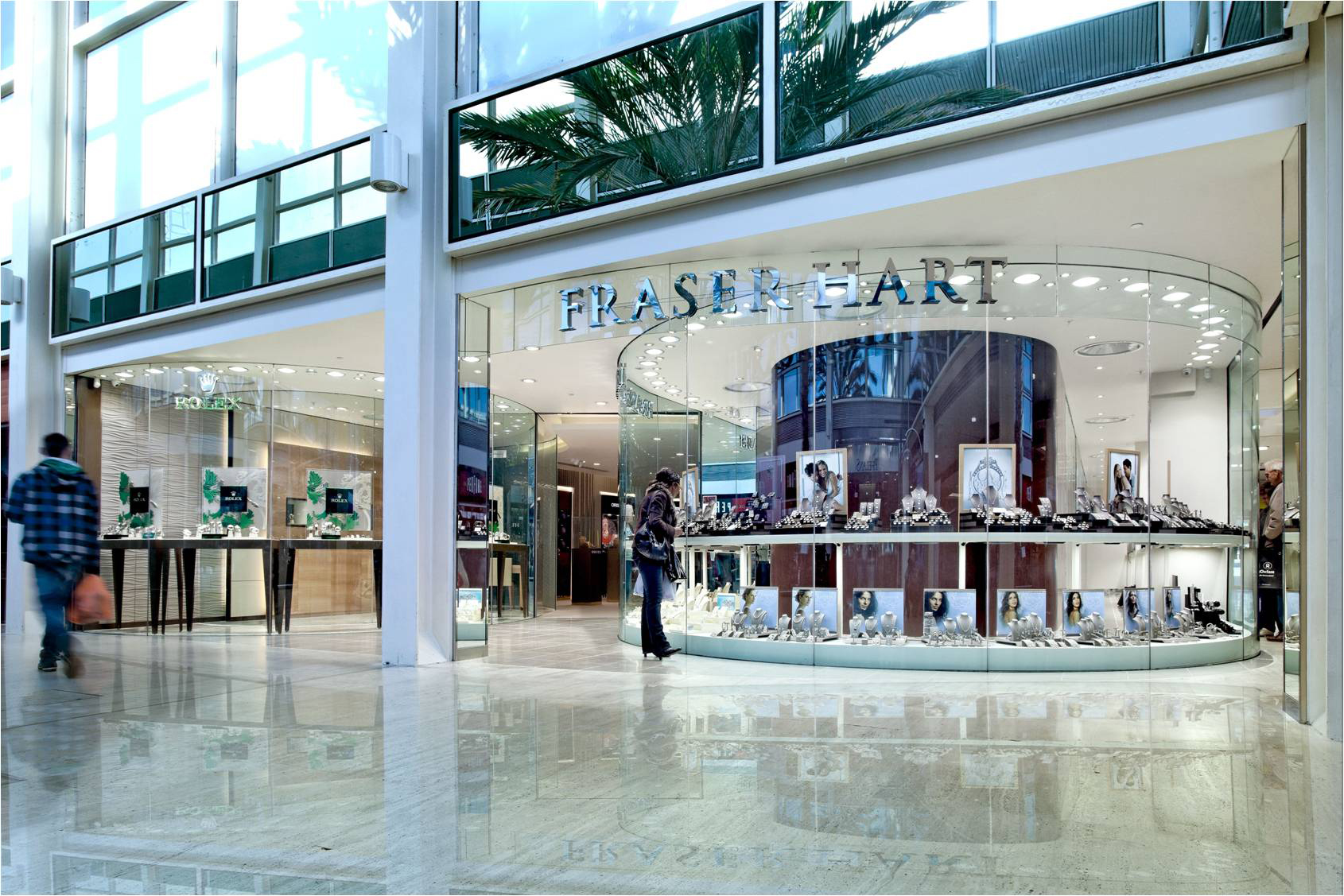
WP: Do you challenge your individual store managers to understand their local competition and tailor their offering to their customers, and to differentiate themselves from their competitors?
NC: We try to take an independent-focused approach. In some ways we see ourselves as a collection of independents, rather than a multiple. In general, we want to very much encourage our managers to develop an independent approach. That has always been our culture and, as we go forward, we will strengthen that while developing an omnichannel strategy in tandem with it.
WP: It must be a dream scenario for individual store managers to act like entrepreneurs of their own businesses. Taking one example: social media allows promotions to be targeted down to individual postcodes. Would it work for store managers to use tools like that to target their local area? Or do you need to maintain tight command and control over the entire Fraser Hart network?
NC: Building those relationships is key for our strategy and our area management team works very closely with those individual store managers to help them on initiatives for each store. It is not all centrally controlled because no one person can control all of that or make every store as successful as a team can. We are reorganising our area management team at the moment to create a structure that best supports our different store groupings in developing their business to the maximum potential.
WP: How much autonomy do individual store managers have now, and how has that developed over recent years?
NC: We have structures and systems of course, but one of the investments we are making going forward is into better and more relevant information systems that can benefit us both centrally, and also help all our managers in all stores. We want to be able to analyse the business, to understand what is working and what is not working. We need to invest more in this.
We have always taken an approach where we ask our managers to take responsibility. The challenge of maintaining consistency in terms of the quality or our customer experience is getting greater so we need to support the network with training and tools so that they can drive their businesses locally.
More and more we have our local managers feeding ideas to our central marketing department. They will have customer events, local marketing, particularly in the digital space. We aim to support all of that from the centre, but we don’t want to create central structures that impede business.
As we develop our business, we are looking more and more closely on a store-by-store basis at the products that we offer. We will be doing more to tailor the product line-up to individual stores rather than cookie cutter them to all stores. We have our core ranges across all Fraser Hart stores, but beyond that we are working to tailor the offering more.
WP: Data must be critical to that. In the dream scenario you would know so much about what being is sold in each store, and sales trends for individual items, that you should be able to plot those trends into the future and predict what is going to increase sales and what is doing to plateau or decline.
NC: We are not yet at the level that we need to be. For us it is about having access to immediate information for the managers, but we are working on more advanced data mining tools so that they can analyse the numbers in a way that is relevant to them.
One of the key things we are working on is around CRM and how our stores are able to manage relationships with their customers. We will be developing this in our central office, and delivering it to stores in a way that helps them understand what customer buying habits are. It is an area where we think we can create a significant advantage by levering the customer data that we have. We are going to invest more and more heavily in this because it puts information and tools into the hands of our managers so that they can improve customer relationships.
WP: Some of this sounds like science fiction, but a lot of it is pretty straightforward. For example, a customer who comes into Fraser Hart and buys a £500 engagement ring is different to somebody that buys a £3000 engagement ring. A person who buys a Michael Kors watch is different to somebody buying a Rolex. Building up profiles of customers based on previous behaviour must be crucial when it comes to tailoring promotions to them, and it is perfectly possible. That is what social media allows even the smallest independents to do.
NC: That is one of the key opportunities for us, but it is not an area that we exploit as much as we need to right now. At the moment we are working with CRM analysis to really delve into the history of our existing customers. We have hundreds of thousands of records that we are now analysing in a lot more detail than we have done before. That is starting to build patterns and understanding. It is something that in the future we need to be much stronger in because it will inform us about how we need to adapt and change and where we focus. It is relatively new for us, but it is a fantastic opportunity for us to become much more relevant to our customers in every way.
WP: Competition, particularly in this context, is coming not so much from Ernest Jones or Goldsmiths, but from digital businesses like Amazon and Asos, which have this sort of ‘big data’ understanding in their DNA. If Amazon were to move heavily into jewellery retail, they would have an instant advantage because they know so much about every one of their millions of customers.
NC: For us, we need to build this expertise consistently over time. We make a profit every year and use as much of that as we can to re-invest in the business. How we invest is all about priorities. We invest in physical stores, and at an operational level we invest in our systems, in our people, in our marketing etc. They are all key to our proposition going forward. Investment is essential, we can’t get away from it, but it has to be done within the context of running a profitable business.
WP: Most conversations about ecommerce have been about what to sell online, at what price, and how it is presented from a visual point of view. Much more important is how you use digital engagement to intimately understand customers, and that is where the likes of Amazon and Asos have such an incredible advantage right now. Not only do they have this advantage, they also don’t carry the cost of maintaining huge networks of expensive physical stores.
NC: The bricks and mortar business, if it is managed in the right way and provides the right experience, is still hugely important. What is changing is that we need to manage the cost of our bricks and mortar business extremely carefully because the costs of competing in the digital world are ramping up and up. That isn’t easy when we face increasing rents, wages and business rates.
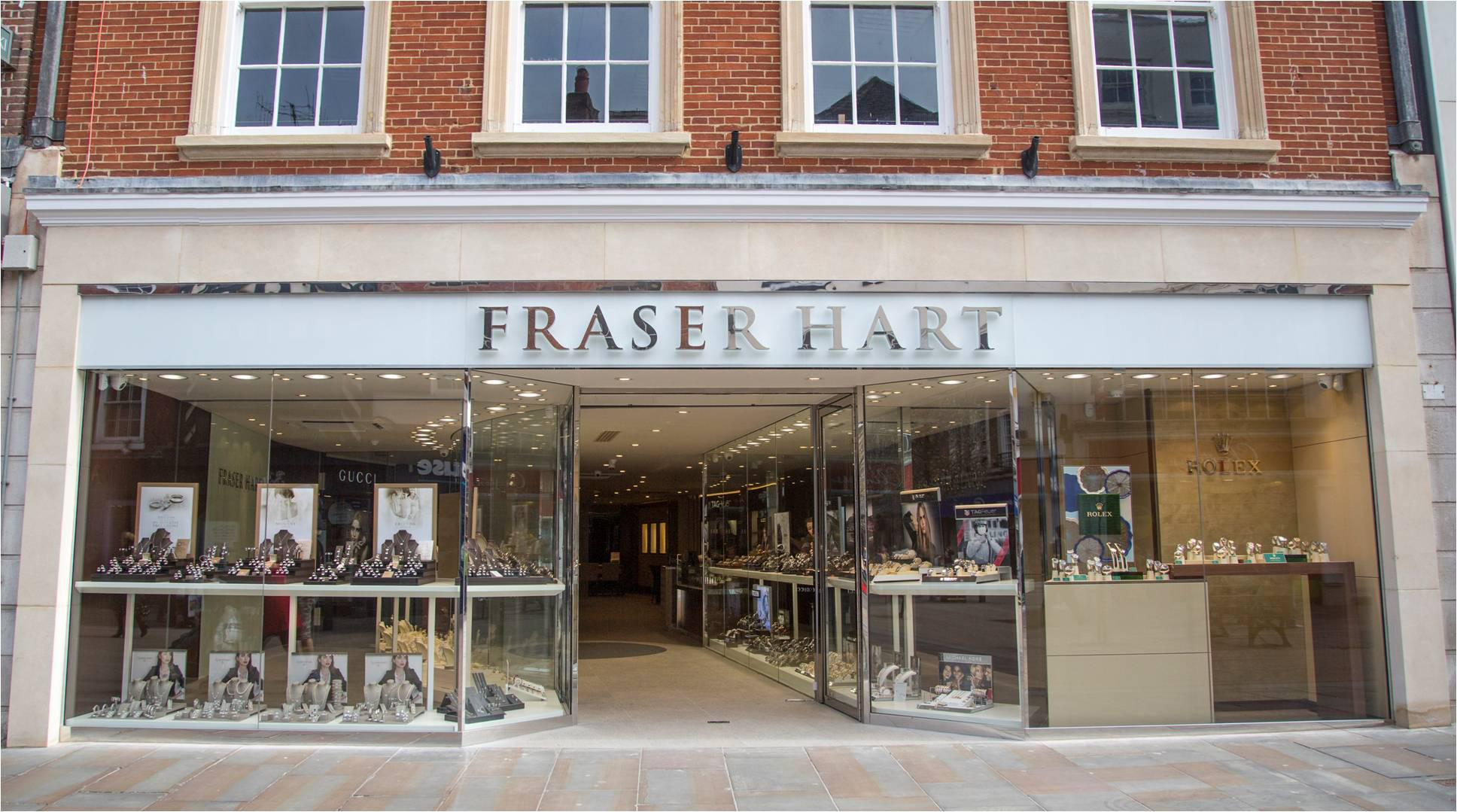
WP: Given those challenges, I am surprised you are still talking about growing the size of your physical store network.
NC: There are challenges coming down the line and I do wonder whether shopping centre operators and high street landlords are prepared for what is coming. I think that some of the major retailers in all sectors that have massive estates up and down the country are going to start shrinking. However, we have not seen that happening at scale yet in our market. Generally speaking, we operate in strong retail centres and demand is still high. As jewellers, we always look for prime positions, but it is the peripheral areas that are starting to struggle.
WP: What we might have described as prime or peripheral 10 years ago is not the same as today. There is a very limited supply of super-prime retail space that you all fight over, and ever-increasing savannahs of space that has now become peripheral.
NC: Absolutely. Even secondary locations within the major centres are facing a challenge now. At our size and scale, we do not have too much of a tail [of stores in peripheral locations], and we are very selective about where we invest in physical stores given the omnichannel world we now live in. I would say that we feel there is still a need to have a really strong physical presence in the right locations.
WP: Speaking more about the specifically about the challenges and opportunities in the watch industry over the past couple of years, I have reported endlessly about the effect of the weaker pound following the Brexit vote boosting sales of luxury brands. The statistics on the UK market are now heavily distorted by a comparatively small number of high-spending tourists in central London buying incredibly expensive watches. The impact of rising average transaction values across the whole market doesn’t tell the whole story because outside London and at the value end of the market, things are quite different.
NC: We don’t really play heavily in central London. We have not had those spikes and we have not had the dips either. Central London was tough a couple of years ago, and we didn’t suffer from that. Even before Brexit, in the first half of last year, we were finding that five or six key watch brands were selling well and that generally we were trading well across the country. If you look at where our major scale centres are, they are outside the M25 in regional centres around the UK.
We have not been enjoying the boom growth of central London, but strong double-digit growth in most of those centres.
We did see a lift in the second half of the year, after Brexit, but most of it was not from tourists. Domestic business has been good for us. Brands like Rolex, Breitling, TAG, and Omega have been the top brands that have generally been strong with domestic customers.
What we are seeing now, in the last month since the general election and terrorist incidents, is that there has been a little bit of softening in the market. But that is the first time we have seen softening this year. For the first four or five months of this year we have seen those top brands trading well.
For the rest of the year, we will start to see the impact of inflation in the general economy. Watch brands have already increased their prices, and I don’t expect to see too many more [price rises], but there is inflation generally and the economy is starting to flatten. The whole uncertainty around Brexit is starting to have an effect on general spending that wasn’t there before.
WP: Business confidence is crucial not only in terms of consumer spending, but also for business leaders like yourself making investment decisions.
NC: Absolutely. We can pull in our horns and just wait for things to happen, but we will be left behind if we do that. Every aspect of our business needs a level of continual investment so we can’t stand still.
WP: Discretionary spending is affected by confidence, and for the past couple of months, it feels like we are living in a country that has been rocked back on its heels with terrorism, the Grenfell Tower disaster and the farcical general election.
NC: Generally, the effect of these things can fade quite quickly in consumer’s minds if there are no more attacks and the government gets on with the job and taking action.
WP: What is your forecast for the next couple of years?
NC: Our priorities are to keep growing the business. We will grow by single digits this year, like-for-like, which is pretty good in the current environment.
We just finished our 2016-17 financial year, which runs from July to June, and we grew in mid-single digits. In the circumstances, that was a reasonable performance.
In terms of profits, we will be flat or possibly slightly down when the figures are finalised because we have put a significant amount of investment into our operating base this year in line with our brand positioning. We are looking at growth again in the 2017-18 financial year, and we have some ambitious targets for the coming few years.
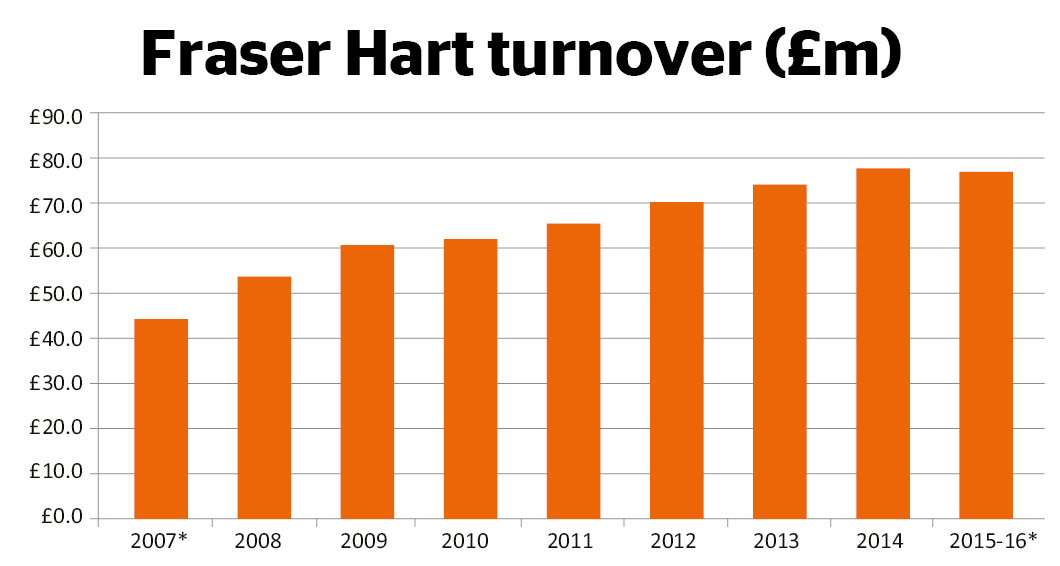
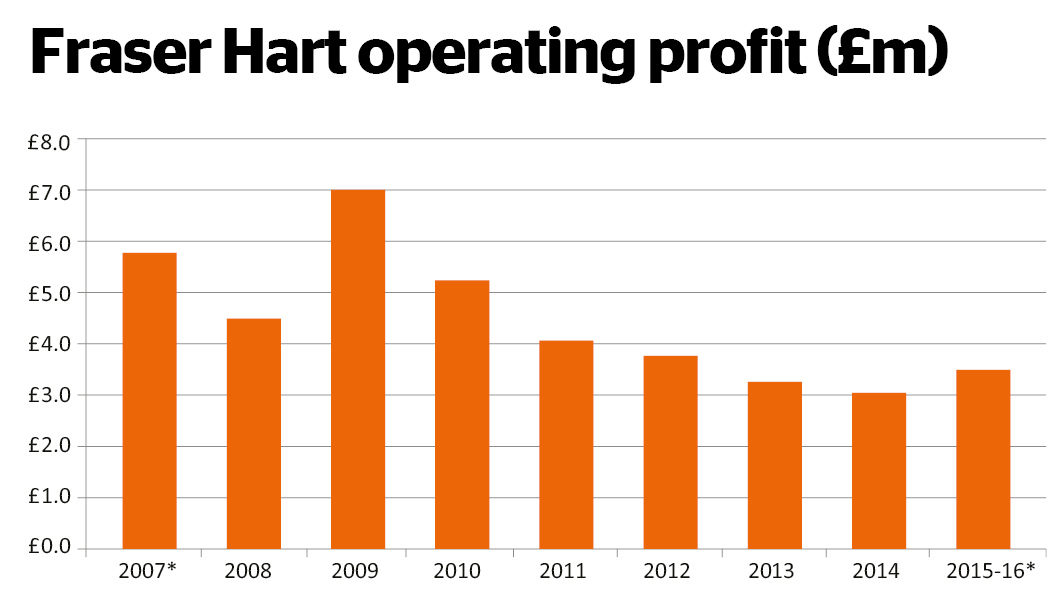
We are working on a four year plan that will take us up to 2021, which we are putting in place for our teams. We have set our stall out in terms of where our investment is going to go across the key brand pillars. As I said before, we are looking at everything with store design, internally and in the windows; how we delineate between generic jewellery, bridal jewellery and the watch brands. We will be editing our product line-up, and that will inevitably mean a condensed offer of brands. We need to focus on the brands that are strongest and fit best with our market positioning.
We have had a strong executive team in place for the past six months that has given us aligned direction in terms of product, people, customer experience and marketing. We expect this to drive growth, despite the economic conditions. We expect to gain market share as we get these propositions right. We will need to grow market share because we do not forecast our market to grow significantly overall.
It is not going to be an easy ride. We are going to have to be flexible, we will need to constantly assess what we are doing. We will have to respond to what customers want and make sure we are taking them on a journey with us.
WP: Would you consider more acquisitions as a business?
NC: Yes, I believe there is going to be consolidation in the market on the retail side and, I could see that there will be consolidation from watch brands as well. It depends on how the market goes, but you can see that everything is moving towards scale. We have always been open to expanding our business through acquisition, new store openings and growth within existing stores. However we do it, we need to stay relevant and strong. A key battleground will be through getting online and omnichannel right.

